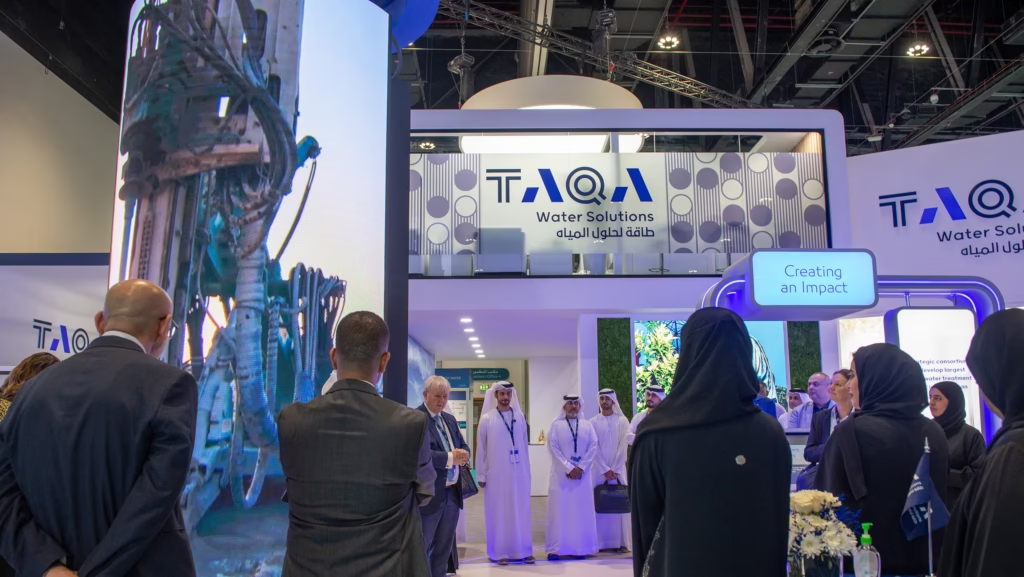TAQA JERA AlBawani Saudi Power Plants have reached a major milestone as a consortium including Abu Dhabi National Energy Company (TAQA), Japan’s JERA Co., Inc., and AlBawani Capital successfully secured financing for two large-scale greenfield power plants in Saudi Arabia. The projects—Rihab ElAwal Power Company (Rumah 2) and Nawras Power Company (Al Nairyah 2)—represent a combined investment of approximately $4 billion and will collectively add 3.6 gigawatts (GW) of electricity generation capacity to the Kingdom.
This achievement is a clear indicator of Saudi Arabia’s commitment to modernizing its energy infrastructure, enhancing sustainability, and meeting the growing electricity demand driven by economic expansion, urbanization, and industrial development.
Strategic Importance of the Projects
Addressing Growing Energy Demand
Saudi Arabia has experienced rapid economic growth over the past decade, accompanied by population growth and expanding urban centers. With this comes a steadily increasing demand for electricity, both for residential consumption and industrial development.

The Rumah 2 and Al Nairyah 2 power plants are designed to meet this surge in demand, providing reliable, long-term energy supply. The new facilities will ensure that homes, businesses, and industries have consistent access to electricity, helping to maintain stability across the national power grid.
Alignment with Vision 2030
Saudi Arabia’s Vision 2030 is a transformative blueprint for economic diversification and sustainable development. A key element of this vision is to reduce reliance on oil and diversify energy production through investments in natural gas, renewable energy, and innovative power generation technologies.

By financing and constructing these two advanced natural gas power plants, the Kingdom is taking tangible steps toward this goal. TAQA JERA AlBawani Saudi Power Plants are perfectly aligned with Vision 2030 by expanding electricity generation capacity sustainably, supporting industrial growth and economic diversification, and reducing environmental impact through cleaner energy production.
Technical Overview of the Power Plants
Combined Cycle Gas Turbine (CCGT) Technology
Both Rumah 2 and Al Nairyah 2 will utilize state-of-the-art Combined Cycle Gas Turbine (CCGT) technology. This advanced approach to power generation combines gas and steam turbines in a single system. The advantages of CCGT include higher efficiency, lower emissions, and reliable power generation even during peak demand periods. This technology is particularly suitable for Saudi Arabia as it balances the need for large-scale electricity production with environmental considerations.
Future-Ready Infrastructure
Both power plants have been designed with sustainability and adaptability in mind. The facilities are constructed with provisions for carbon capture and storage (CCS) technologies, enabling them to reduce emissions further as the Kingdom strengthens its environmental policies.
By incorporating future-ready infrastructure, TAQA JERA AlBawani Saudi Power Plants ensure long-term compliance with international environmental standards while contributing to global efforts to mitigate climate change.
Financing and Stakeholder Collaboration
Consortium of Global Leaders
The $4 billion financing for these power plants was secured through a consortium of major regional and international banks. These institutions provide a robust financial foundation and demonstrate confidence in the viability of the projects.
The involvement of multiple banks and financial institutions ensures that the projects benefit from risk diversification, long-term financial stability, and access to technical and financial expertise during the construction and operational phases.
Power Purchase Agreements (PPAs)
To ensure financial sustainability, the consortium has entered into 25-year Power Purchase Agreements (PPAs) with the Saudi Power Procurement Company (SPPC). These agreements guarantee a stable revenue stream, provide certainty to investors and lenders, and support predictable operational and maintenance planning.
PPAs are a critical component of large-scale infrastructure projects, as they reduce financial risk while ensuring consistent energy delivery to consumers.

Project Development and Construction
Build, Own, and Operate (BOO) Model
The Rumah 2 and Al Nairyah 2 power plants are being developed under a Build, Own, and Operate (BOO) framework. This model gives the consortium full control over construction and operational decisions, flexibility to implement efficiency measures and advanced technology, and responsibility for maintenance and performance standards.
By adopting the BOO model, the consortium can ensure that the plants operate efficiently, reliably, and in alignment with international best practices.
Engineering, Procurement, and Construction (EPC)
Engineering, Procurement, and Construction (EPC) contracts for the projects have been awarded to globally recognized firms. These companies bring extensive experience in delivering large-scale power infrastructure projects on time and within budget.
Key EPC responsibilities include designing plant layouts and engineering plans, procuring high-quality equipment and materials, and managing construction schedules and quality control. This ensures that both power plants will be constructed to the highest standards of safety, efficiency, and durability.
Equipment Supply and Technology
Siemens Energy has been selected as the Original Equipment Manufacturer (OEM) for critical turbine and generator equipment. Their technology ensures high operational efficiency and output, reduced downtime through reliable performance, and compliance with global environmental standards.
The integration of advanced turbine systems will contribute significantly to reducing operating costs and increasing energy generation capacity.
Environmental and Economic Impact
Sustainable Energy Generation
The use of CCGT technology ensures that TAQA JERA AlBawani Saudi Power Plants operate efficiently with lower emissions compared to conventional plants. This contributes to Saudi Arabia’s commitment to environmental sustainability and carbon reduction.
In addition, the plants’ future-ready design allows for integration with carbon capture solutions, positioning the Kingdom as a regional leader in environmentally conscious energy production.
Economic Growth and Job Creation
The construction and operation of these power plants will have a substantial economic impact, including thousands of direct and indirect employment opportunities during construction and ongoing operations, supporting industrial growth, and attracting domestic and foreign investment. The projects thus play a dual role in supporting both energy needs and economic diversification.
Regional Implications and Future Prospects
Regional Energy Integration
With Saudi Arabia strengthening its energy infrastructure, the projects could foster greater collaboration within the Gulf Cooperation Council (GCC). Regional energy integration offers several benefits, including enhanced grid reliability across member countries, efficient resource sharing during peak demand periods, and coordinated regional energy policy planning.
Technological Advancements
These power plants set a benchmark for future energy projects in Saudi Arabia and the broader GCC region. Lessons learned from the design, construction, and operation of these facilities will inform future projects, ensuring adoption of best practices and cutting-edge technologies.
Key technological trends supported by these projects include adoption of cleaner and more efficient energy technologies, integration of digital monitoring and smart grid capabilities, and preparation for renewable energy integration in the future.
Alignment with Saudi Arabia’s Long-Term Energy Vision
Vision 2030 Goals
The Rumah 2 and Al Nairyah 2 projects demonstrate how private-public collaboration supports Saudi Arabia’s Vision 2030, which emphasizes diversifying the energy mix beyond oil, building resilient infrastructure, and promoting sustainability and environmental responsibility.
By investing in natural gas and advanced power generation, the Kingdom ensures long-term energy security while meeting global climate commitments.
Strengthening Energy Security
Energy security is vital for national stability, economic growth, and investor confidence. These power plants contribute to stable electricity supply across residential, commercial, and industrial sectors, reduced vulnerability to fluctuations in fuel availability or global energy markets, and improved capacity planning for future energy needs.
Conclusion
The financial closure of Rumah 2 and Al Nairyah 2 power plants represents a landmark achievement for TAQA, JERA, and AlBawani Capital as well as for Saudi Arabia’s energy sector. These projects combine advanced technology, sustainable design, and robust financing to enhance the Kingdom’s electricity generation capacity by 3.6 GW.
By addressing growing energy demand, aligning with Vision 2030, and adopting innovative technologies, these power plants set a new standard for efficiency, reliability, and environmental responsibility.
As construction progresses and the plants become operational, TAQA JERA AlBawani Saudi Power Plants will play a central role in ensuring energy security, supporting economic growth, and positioning Saudi Arabia as a regional leader in sustainable power generation. Through collaboration, innovation, and commitment to sustainability, these projects demonstrate the Kingdom’s determination to secure a future-ready energy infrastructure capable of meeting both domestic and regional energy needs.
Do follow UAE Stories on Instagram
Read Next – Oman Launches Construction Digitisation Drive to Boost Real Estate














